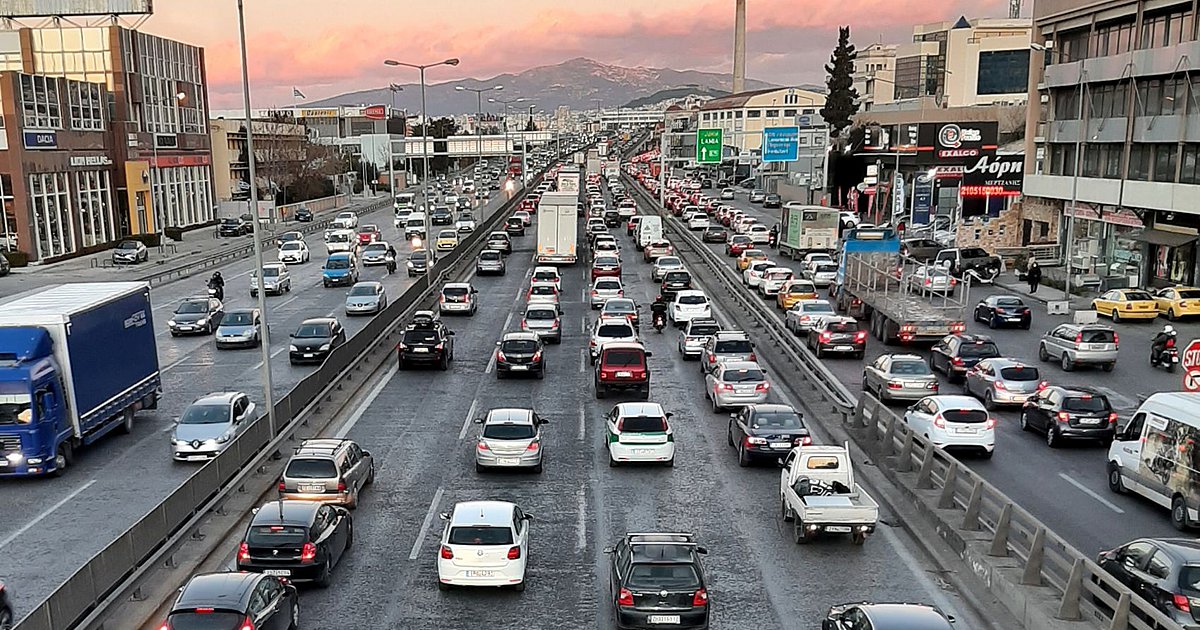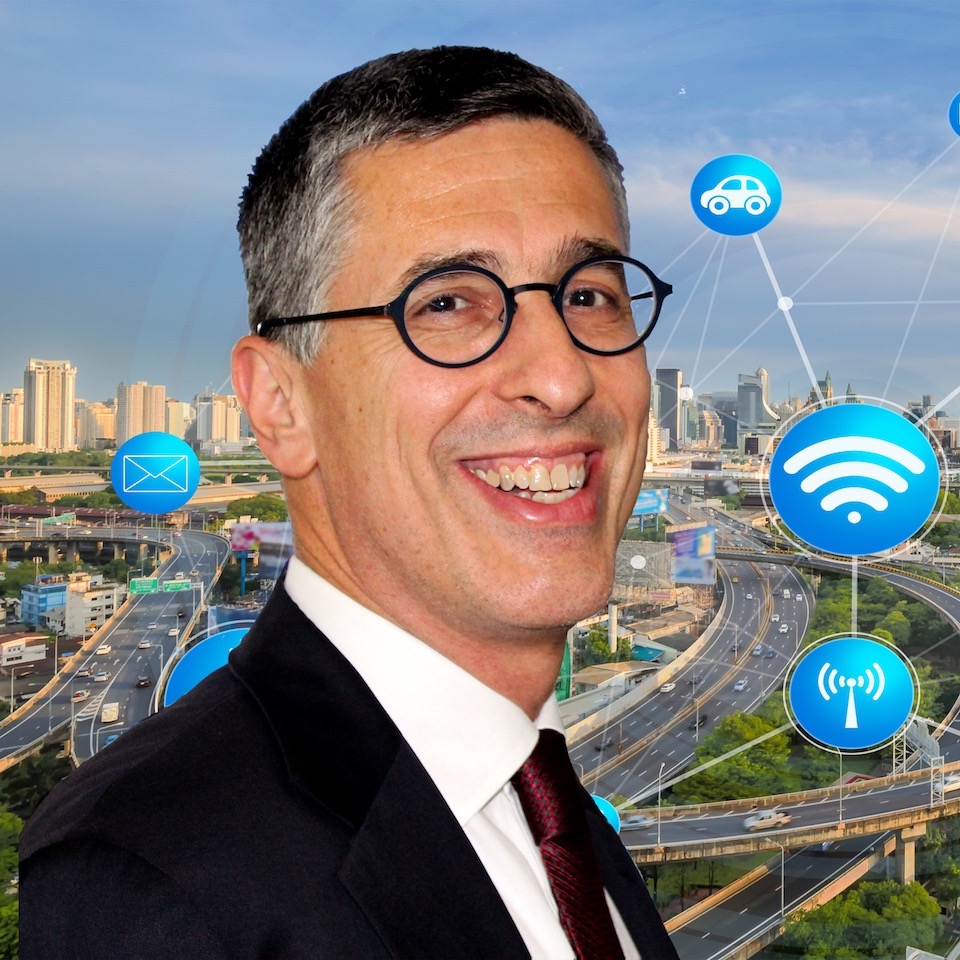Of particular interest is the fact that there is a plan to increase the public transport ticket price, while there are no controllers to check those who do not pay for a ticket, this is a particularly contradictory situation. How conflicting they are with each other and how improperly things sometimes operate in Greece?
Public Transport is the only solution to the impasses in traffic in Athens. We should pay much more attention to them from every perspective. In order to be efficient, they need proper funding. Therefore, the problem is twofold, not only does a public enterprise face financial difficulties, but it also fails to provide the appropriate service, which is the solution to our issues. Obviously, the solution cannot be to add more roads and vehicles. We know very well that the more roads we add, the more vehicles we will have.
It is worth mentioning that the Hellenic Institute of Transportation Engineers had undertaken a discussion journey several years ago, examining issues related to traffic problems with the presence of distinguished experts. This was before the economic crisis, when Attiki Odos had more than doubled the capacity predicted by the road’s capacity study, at a time when the only road axis that operated was the descent to Sygrou Avenue. No other road was sufficient; the more new infrastructure and roads you provide, the quicker they fill up because they are occupied by cars. The common denominator solution was and still is better Public Transport, discouraging car use, and increasing the cost of car usage to act as a deterrent.
The main principle is that there is obviously no solution if everyone wants to commute with their vehicles, especially during peak hours in the morning and afternoon. A developed city is not where everyone has the money to go to work in their own cars; a city it is truly developed when everyone, rich or not, can comfortably and quickly use Public Transport. Any measure discussed to leave our private cars behind faces resistance from both politicians and citizens. There are many examples where we try to make a change, add a bicycle lane and the reactions on a local level are unbelievable because private car owners fear losing their convenience while moving on the same axis occupying space which could have been used by three or four times the number of bicycles. There is incredible resistance to giving up our private cars and unfortunately, politicians haven’t dared to bring about change and this situation continues to worsen. Also, the characteristic we often mention is that the same problem is caused by the car owners who complain. In other words, the problem is not someone else. The problem is that all those who complain about having too many cars on the road are the ones whose cars create the congestion problem.
Regarding the claims that bus frequency is very low, such as the case of Palaio Faliro, where two bus lines pass through the area with a frequency of 35 to 40 minutes, the response is immediate: “This happens because we have allowed the road in Palaio Faliro to be filled in with private cars (parked or not). If we dedicated an entire lane for buses to move, they would make double or triple the routes, while private cars would be stuck. In Kifissos and other axes, the only solution is to reduce the number of passenger car lanes and give a lane to buses to run continuously. From Ampelokipoι, and Panormou to Syntagma, the bus takes 5 minutes if we guarantee its traffic lane; otherwise, the private car takes 25 minutes during peak hours and the bus takes 30 minutes. The difference is that the buses can carry up to 5.000 passengers in one traffic lane within 1 hour, while the private cars will barely transport 800.”
The image of buses is not attractive at all, i.e. there are very few buses that carry travellers decently. If we start giving priority to buses, this situation will improve. However, when they have no incentive and, at the same time, low demand, everyone thinks there is no reason to have more buses. This vicious cycle should be stopped somewhere. We cannot constantly live with the excuse that there are no buses. If we are to do something, we all need to make an effort together to improve Public Transport. Instead of trying to find miracle solutions to traffic congestion.
It is a fact that bus lanes have practically been abolished for years, and there is no control. If there is something that any reasonable person in Athens should shout out, it is to provide more Public Transport and not to allocate more space for private cars. He emphatically states that space for private cars does not generate on its own. Even if a little space emerges, it is immediately occupied by private cars. He even brings up the example of the metro in Thessaloniki, where after 6 months, it will again be taken over by cars, as happened with the Athens metro in 2000 and 2004.
The main problem is the inadequate monitoring of the roads. There are many examples of roads with three traffic lanes, of which only one is functional. It is important to emphasize the need to focus on law enforcement rather than trying to find miracle solutions for y. We need to monitor illegal parking, bus lanes and Public Transport. In the city center of Athens, there are enough metro lines, specifically 3 lines in the very central area where there are 7 metro stations. We are not justified in using our cars in the center of Athens; we should leave them a bit outside and use Public Transport. There is a corresponding cost in terms of time, not only personal but also collective time, as we delay those who do not want or cannot use their private cars.
We need to change our habits, something that we see changing in other European cities. Europe is changing because they have realized that they need to walk, use their bicycles, and exercise, even if initially discomfort us. Α change in mentality is required, which unfortunately we are far from. It is futile for everyone to be in their cars and constantly wait for a road to be built so that they can get to work faster and preferably park outside their homes. These phenomena do not exist in Europe.”
The problem is that in Europe and especially in big cities, the cost of using private vehicles is very high. The Syntagma area is a very critical area with heavy traffic. There is always Municipal Police and Traffic Police in that area and when someone double parks, stops briefly, or slows down for any reason, they are immediately removed. It is the only point where traffic functions; there is no systematic monitoring and Traffic Police anywhere else.
The striking absence of Traffic Police
Traffic monitoring in the era we live should be implemented with cameras. It is not possible to have millions of traffic policepersons; many cameras should operate to have control over what is happening. Whenever we try to install a camera, there is a damage and reactions from everyone (e.g., judges, lawyers, car owners, residents), who will challenge this measure. It is obvious that cameras could lead us to better management to deal with this situation. When we do not want the tools, we should be ready to take all the consequences, namely, the chaos it entails. In Europe, there are no roads filled with traffic policepersons but with cameras. Even if there are traffic policepersons, they usually check helmets and speed rather than the next congestion at the next intersection.
However, one difference between Athens and other European cities was that in 2004, the Greece’s Capital city acquired a very remarkable infrastructure of 150 cameras, of which only 12 or 14 are currently in operation. Responding to claims that the issue lies not with the cameras but with how the state manages the infrastructure, Prof. Yannis states unequivocally that the Authorities reflect society. Society and the Authorities are the same thing; when the entire society is opposed to anything that bothers their private vehicles, nobody can confront them. That is why we are constantly getting worse. We cannot suddenly change our behavior through parthenogenesis.”
There is a long way to go to reach the standards of some other European metropolitan areas. A change is needed and we should alter our culture because everything starts from the top. We should consider both bus lanes and helmets as sacred, so that motorcyclists are not killed, as we have twice as many motorcycle fatalities as the whole of Europe. However, common acceptance is required. It is a fact that no one dares to confront the convenience everyone has with their private vehicles and it should be emphasized that in the last two years, there has been a surge in the market for new vehicles without the sale of old ones. Our roads are now overflowing with private vehicles; next year, we will be begging for it to be like the previous year. If there’s anything journalists, scientists, politicians and citizens should do, it is to advocate for Public Transport as the only solution. Even for short trips, such as in Pagkrati or Syntagma, bicycles are preferable.
Particular attention should be given to both bicycles and Public Transport. Those who use them dare not say anything and are even ridiculed by car drivers. Moreover, a significant role can be played by Media, focusing on issues and seeking solutions that do not exist (as in the case of Kifissos), while the real problem is to give priority to Public Transport. Transportation engineers have been saying this for decades, but there are no brave people around us. The brave among us are punished.
Interview in the show Review on the tv station Naftemporiki in October 2023

